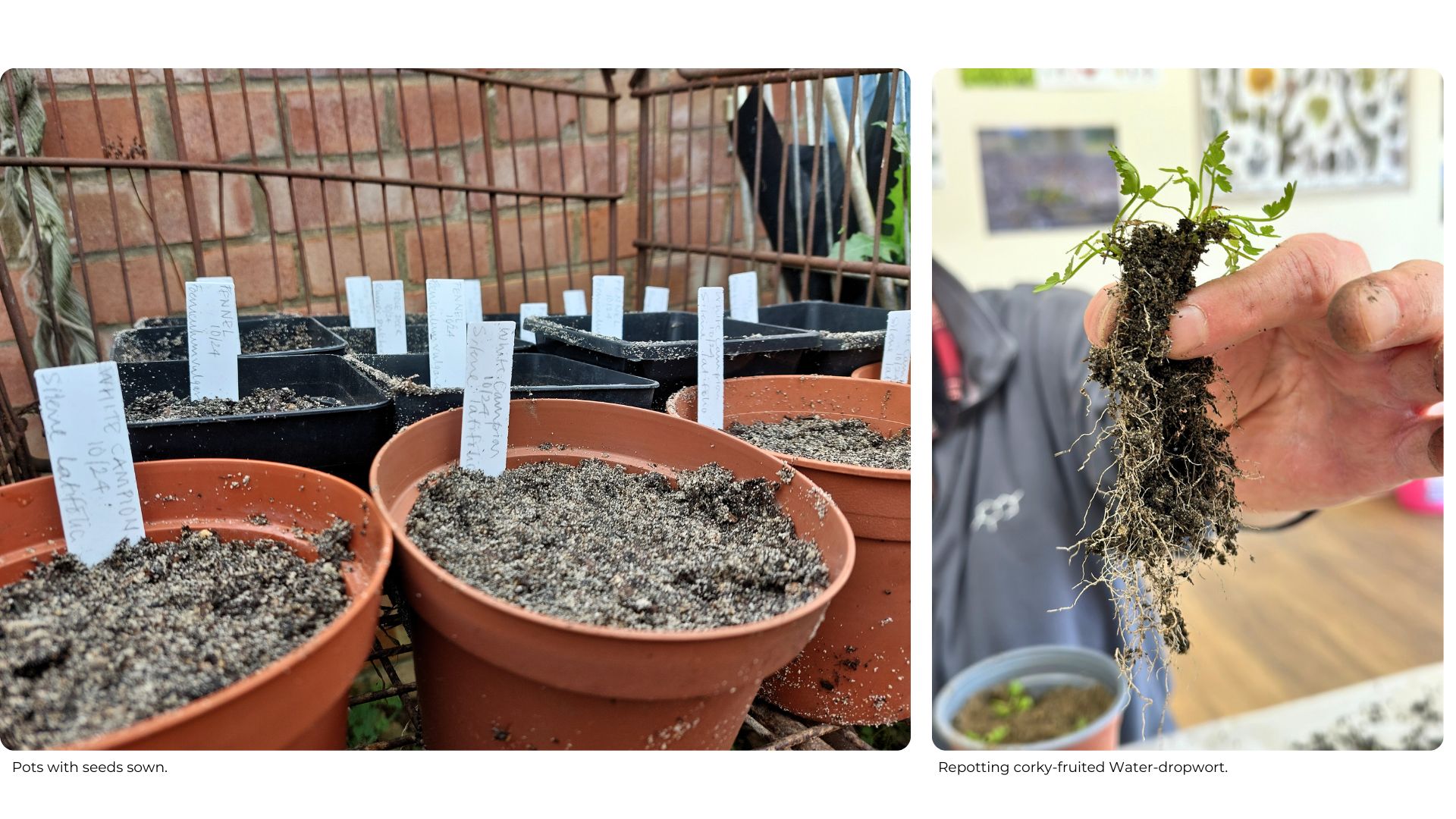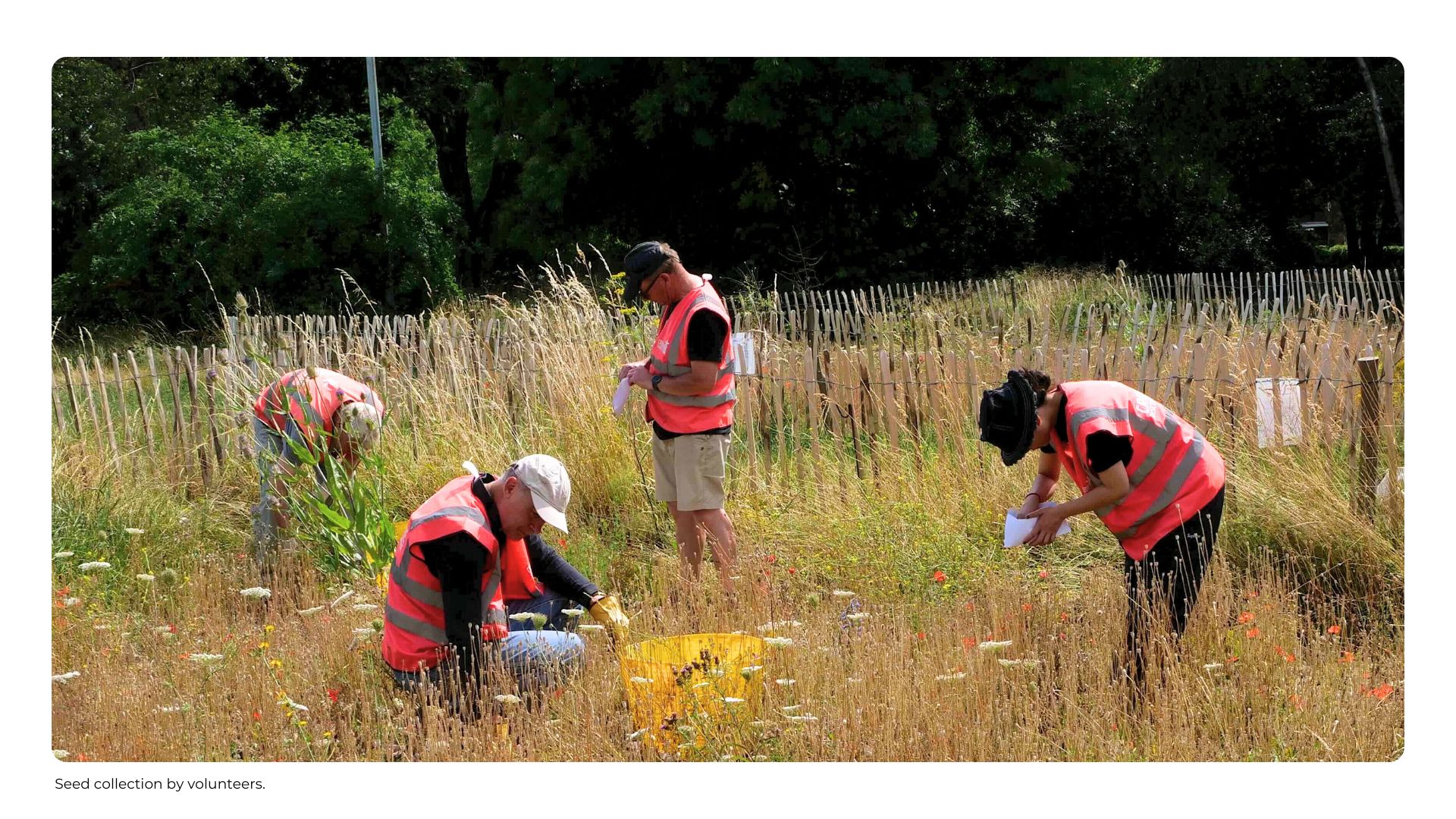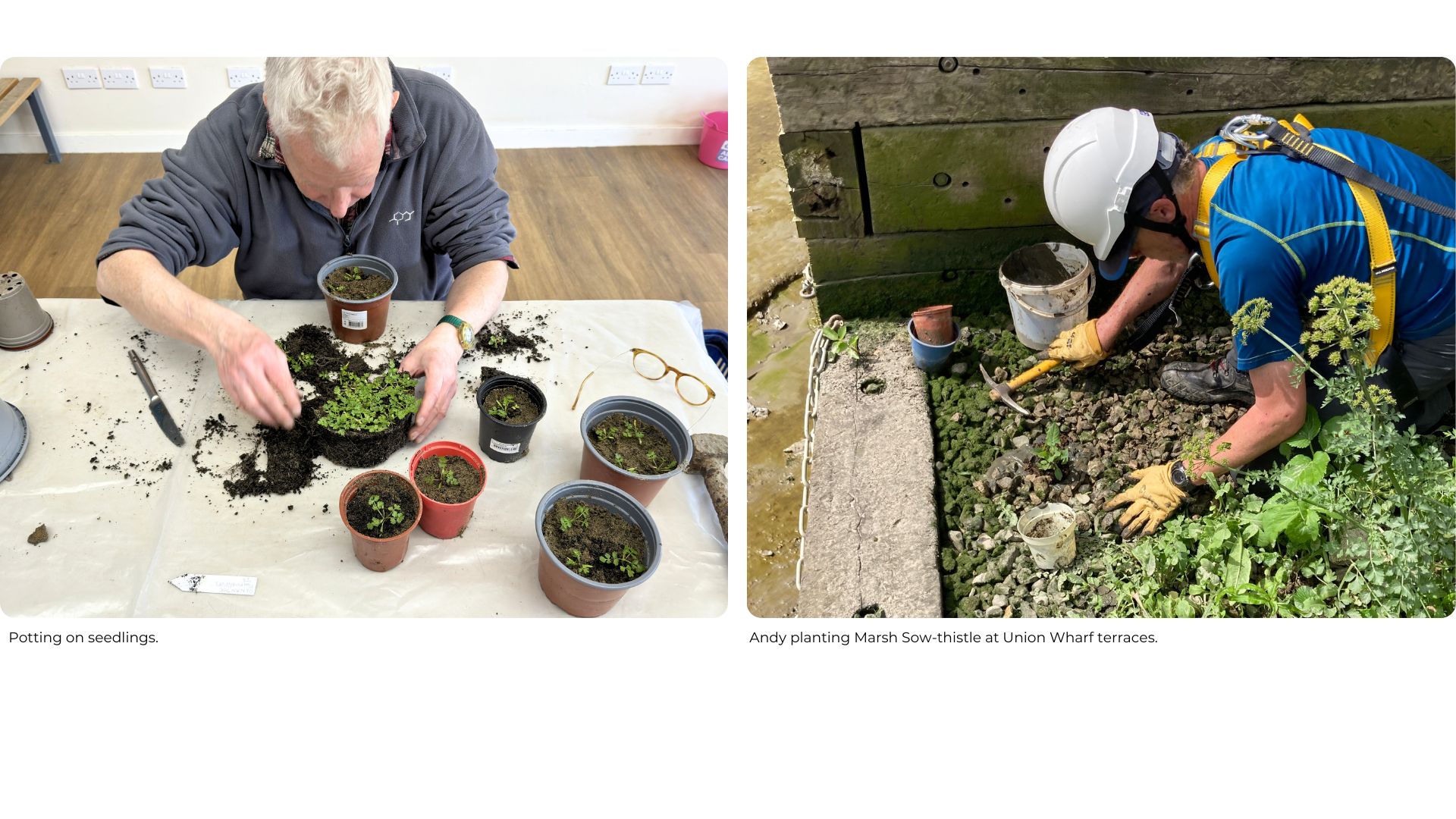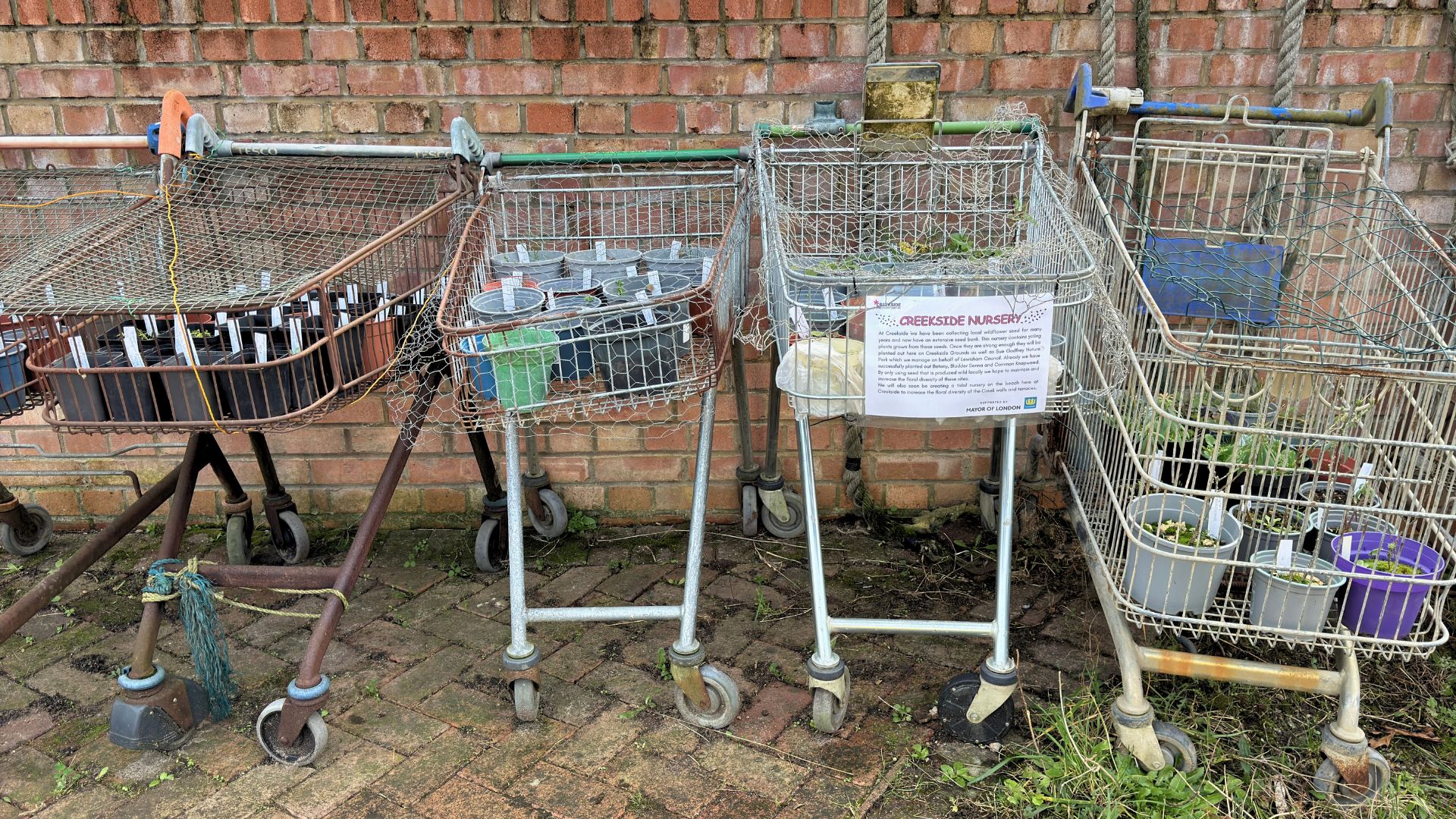Over the years, Creekside has increased its collection and propagation of seeds sourced from local wildflowers. Through seed collection and storage, we’ve created our ‘seed bank’, which now contains over 60 species, ranging from common species to some of the rarest plants found in our local environment.
We have been building up local species diversity at our Creekside site over the last two decades. We did this in some cases by translocating local species under threat and planting them on our site. We also collect seeds and grow them on as plants or directly sow them. But it is not enough just to have them at Creekside. To ensure their survival, we also need to establish them in other places locally. So, we have increasingly been translocating species to other sites we manage, knowing where and how we can give them the best chance of success.

With the increase in local development in the area comes the threat of local extinction of wild species. Responding to this, our seed collecting has become more focused and organised. But it’s not just developments that lead to the loss of species - lack of appropriate management does as well. Aggressive species such as Bramble, Buddleja and Narrow-leaved Ragwort can quickly displace rarer species. So, ensuring receptor sites are managed appropriately is just as important as rescuing species. We have translocated species to nearby Sue Godfrey Nature Park and other sites we manage. It is part of a holistic approach focusing on species living wild in the local area and maintaining conditions whereby they can continue to survive and be wild.
Other species will find the coming decades challenging just as we will. Some of the species we have established at Creekside are rare in the local area, and the extreme heat we have experienced in recent years has certainly had an impact on them.
A good example of this is Cowslip. Some plants were grown from seed – collected from one of the last truly wild populations in inner London – and planted on our site.
For many years, the Cowslip population did well and started going wild on our site. Then, the extreme heat of July 2022 hit, wiping out all the original plants. Fortunately, some of the wild ones survived elsewhere on site. Meanwhile, we grew more with the seed we had banked, just in case. These were planted out and now the population is not only back up to where it was but also increasingly spread about the site. This should ensure that the Cowslip population will be more resilient and able to survive through future extreme heat events.
This year, as part of our Rewild London project, the seed bank has become better organised, catalogued and storage improved. We are particularly grateful to Ian, one of our volunteers, who has taken on this task. He also sows and looks after the young plants we are growing on within the revamped nursery.

One of the overriding rules we apply to our seed bank is that the seeds must be collected from local wildflowers. We are not attempting to diversify the local environment merely by planting new species. Our approach is based on the age-old principles of first getting to know the other species that live around us, the problems they face and valuing what we have.
As the old saying says, if you don’t value what you have, you will lose it. We have lost enough.
This important seed bank and nursery work is a core part of what we do to deliver and enable informed nature conservation management for resilient local habitats. It’s not a commercial venture. We use the seeds and plants on sites that we know are being managed adequately to give the species the best chance of establishing and reproducing.
We’re delighted that these works have been supported by the Mayor of London in partnership with the London Wildlife Trust. You can read more about the whole Deptford Creek SINC Link project here.



